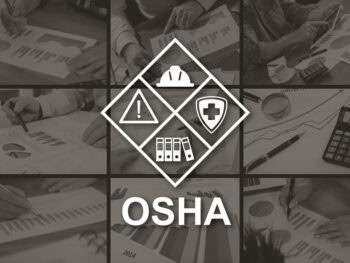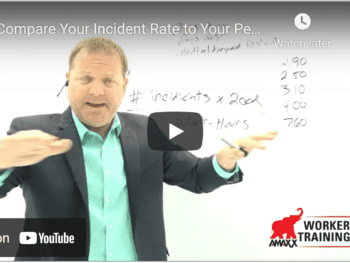The Occupational Safety and Health Administration (OSHA) was created at the federal level on December 29, 1970, with the goal of assuring “safe and healthful working conditions for working men and women by setting and enforcing standards and by providing training, outreach, education, and assistance.” Since its creation, the agency has evolved and become commonplace in the workers’ compensation scene as a means of investigating work injuries and providing information to interested stakeholders. Parties seeking to reduce workers’ compensation program costs should understand OSHA and view the agency as a partner in making workplaces safe for employees.
Click Link to Access Free PDF Download
“4-Step Sequence For Effective Employee Screening, Hiring, & Placement”
Understanding OSHA Basics
There are many misconceptions about OSHA. It is important to those seeking to provide a safe workplace to understand better the requirements and how the agency is responsible for enforcing safety standards.
OSHA standards and agency overview covers most private sector employers. While it does not include many state and local government agencies, employees of these entities are subject to protections by the federal act and applicable state programs.
The federal act also allows states to create their own OSHA programs. In these jurisdictions, the state agency receives funding from the federal government to run its program. This allows states to develop their own standards, provided they meet the federal minimums required under the Act. There are currently 22 OSHA approved programs that include: Alaska, Arizona, California, Hawaii, Indiana, Iowa, Kentucky, Maryland, Michigan, Minnesota, Nevada, New Mexico, North Carolina, Oregon, Puerto Rico, South Carolina, Tennessee, Utah, Vermont, Virginia, Washington, and Wyoming.
OSHA Rights and Responsibilities
OSHA mandates the creation of a series of rights and responsibilities that impact covered employers and their employees. These issues are governed by the basic premise of OSHA – employees have a right to a safe workplace. It is the responsibility of the employer to provide this environment. Basic guidelines include the following:
- Employers – Requirements to inform employees of workplace hazards and provide training on how to avoid injury. This provides information people are able to understand, which can include written information in multiple languages. Accident information needs to be posted in common workspaces. Prompt response to employee complaints and OSHA corrective action are required.
- Employees – The ability to voice concerns without fear of retaliation. They also should have access to critical safety information. This includes information concerning chemicals and other harmful materials in the workplace. All employees need to understand how and when to report workplace incidents.
Using Workplace Safety Committees to Drive a Culture of Safety
There are no federal requirements for employers to have an established and functioning safety committee. However, many state-based OSHA programs require these committees based on the size of the employer. Even if one is not required by a state program, employers have found them to be useful in identifying issues, mitigating the danger and implementing cost-effective changes that promote worker safety and injury reduction. Important steps for a committee to take include:
Prepare a plan for a safe workplace and best practices;
- Create a safety program and written forms;
- Prepare and present annual training on safety-related issues;
- Initiate a workplace “self-inspection” program to review all safety practices and identify corrective action; and
- Generally promote a safe workplace through legal, compliance and human resources departments. Be creative. Consider hosting events such as a companywide “safety week” to make all employees aware of safety issues and foster a workplace environment dedicated to safety.
Additional information and guidance can be found in federal regulations, which are located at 29 C.F.R. §1960.36 et seq.
Partnering with OSHA for Workplace Safety
All OSHA agencies have resources available to employers concerned about safety. While the nature of these services varies, it does offer stakeholders seeking to create a culture of compliance to work with OSHA on preventing workplace injuries. Resources commonly found include the following:
- Seminars and education sessions: These workshops are typically offered to employers free or at a nominal cost to educate parties on common workplace safety hazards. They also offer tips on cost-effective improvements.
- Safety Partnerships: This is an opportunity for employers to have an OSHA safety inspector visit their worksite or location to identify risks without being subject to fines. The employer is then given a reasonable amount of time to correct any identified safety issues.
Conclusions
The goal of OSHA is to promote a safe workplace. By understanding how the agency operates, interested stakeholders can foster an environment of compliance and provide safety to its employees. In turn, this can reduce workers’ compensation program costs.

Contact: mstack@reduceyourworkerscomp.com.
Workers’ Comp Roundup Blog: https://blog.reduceyourworkerscomp.com/
©2018 Amaxx LLC. All rights reserved under International Copyright Law.
Do not use this information without independent verification. All state laws vary. You should consult with your insurance broker, attorney, or qualified professional.
















